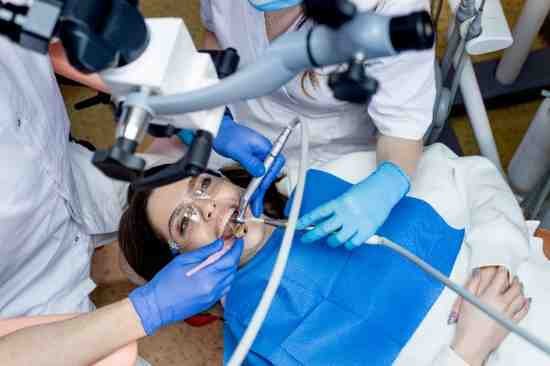The human brain is a masterpiece of adaptability. Through a process known as neuroplasticity, the brain can reorganize itself in response to experience, injury, trauma, or the external environment in general. While this flexibility is essential for adaptation and learning, it can sometimes go awry, resulting in neuroplastic symptoms that closely resemble physical illness.
These symptoms often appear subtle at first, but understanding their early signs can be the key to better health outcomes and more effective interventions.
The Basics of Neuroplastic Disorders
Neuroplastic disorders occur when the brain’s plasticity causes or reinforces maladaptive neural pathways. This means the brain learns to wire itself in ways that lead to chronic pain, sensory disturbances, emotional dysregulation, and other physical symptoms that have no structural cause.
Often misunderstood or misdiagnosed, these conditions can be invisible to traditional diagnostic imaging and blood tests but entirely real to those who suffer from them.
Why Early Recognition Matters
Faulty neural patterns can be reinforced by fear that the body is damaged. Early recognition of neuroplastic disorders can prevent this process. When not recognized, these patterns persist over time and become more difficult to retrain, leading to a vicious cycle of chronic discomfort and frustration.
Correctly diagnosing pain or illness as neuroplastic early can:
- Reduce misdiagnosis
- Limit unnecessary medical interventions
- Lead to faster recovery through mind-body approaches
- Empower patients with knowledge and coping tools
Common Early Signs You Shouldn’t Ignore
Neuroplastic symptoms may vary widely, but here are some of the most common indicators that your brain’s rewiring may be contributing to persistent issues:
1. Unexplained Chronic Pain
Pain that moves, changes in intensity without a trigger, or occurs without injury could be the brain misinterpreting signals. Back pain, neck tension, fibromyalgia, and migraine are frequently neuroplastic in origin.
2. Sensory Sensitivities
Many people begin to experience new or heightened sensitivities to sound, light, or touch. This is particularly true for individuals with conditions like migraine, where even minor stimuli can trigger a cascade of symptoms.
3. Fatigue That Doesn’t Match Activity
Neuroplastic disorders often present as fatigue or exhaustion after simple tasks. This isn’t laziness or lack of sleep—it’s the nervous system trying to protect the body when the mind is in a state of distress that might not be recognized.
4. Emotional Volatility or Anxiety
If your emotional responses seem disproportionate—sudden anxiety, anger, or depression—it may be your brain creating protective but unhelpful feedback loops in response to stress or trauma.
5. Digestive Upset Without Medical Cause
The gut-brain connection is strong. Symptoms like bloating, cramps, abdominal pain, diarrhea, constipation, or nausea with no consistent trigger may be signs of maladaptive neuroplastic patterns in the enteric nervous system.
6. Muscle Tension or Tremors
Some people experience muscle tightness, shaking, or twitching without any neurologic disease. This could be the result of motor patterns being reinforced through stress or trauma-related pathways.
Misdiagnosis Is Common—Here’s Why
One of the biggest challenges with neuroplastic symptoms is how often they are dismissed without deeper diagnostic evaluation. Patients might be told:
- “It’s all in your head”
- “Your scans are clear, so nothing is wrong”
- “You need more rest, vitamins, or better posture”
While these responses may be heard from clinicians who mean well, they miss the issue in how the brain is processing signals, and focus incorrectly on whether the cause is visible.
What Causes Neuroplastic Disorders to Develop?
There is rarely one cause, but several overlapping factors may trigger maladaptive brain patterns:
- Recent life challenges
- Past trauma (a terrifying or horrifying event)
- Chronic stress or anxiety
- Depression
- Long-term impact of Adverse Childhood Experiences
Sometimes, a single trigger—like a car accident, infection, or surgery—can set off a chain of rewiring that leads to persistent symptoms long after healing.
Tools for Rewiring the Brain Positively
The good news is that if the brain can rewire in a harmful way, it can also rewire in a healing direction. Some powerful tools include:
1. Somatic Tracking
A mind-body technique that involves noticing and observing symptoms without fear. This helps the brain unlearn the “danger” signal associated with a harmless sensation.
2. Neuroplastic Recovery Therapies
Approaches like Pain Reprocessing Therapy (PRT) and Emotional Awareness & Expression Therapy (EAET) can help retrain the brain’s responses to perceived threats.
3. Meditation and Mindfulness
These practices calm the nervous system and encourage the creation of new, healthier neural pathways by reducing stress hormones and increasing awareness of thought-symptom connections.
4. Journaling and Expressive Writing
Getting in touch with unprocessed emotions or traumatic memories can release emotional pressure and reduce the brain’s tendency to create physical symptoms as a form of expression.
5. Gradual Exposure to Feared Activities
If your brain has learned that movement or specific actions are dangerous, slowly reintroducing these activities can help it relearn that they are, in fact, safe.
Living with Neuroplastic Symptoms in 2025
If you’re struggling with confusing, shifting, or persistent symptoms despite normal test results, you’re not alone—and you’re not imagining it. You may be experiencing neuroplastic symptoms, and the path to recovery may be closer than you think.
In 2025, awareness of mind-body disorders is growing. Doctors, therapists, and researchers are increasingly recognizing that healing isn’t always about fixing what’s broken—it’s about teaching the brain that you’re safe.
Final Thoughts
Neuroplasticity is both a gift and a challenge. When used wisely, it can help stroke survivors walk again and trauma survivors rebuild their lives. But when it misfires, it can create a complex web of symptoms that feel hard to escape.
By recognizing the early signs of neuroplastic disorders and understanding how to retrain the brain, you take the first step toward lasting healing—not just physically, but emotionally and neurologically too.
Check Also: Semaglutide and Regain: What Happens After?















Leave a Reply